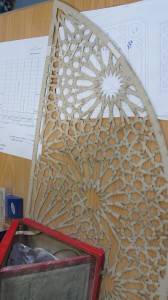It’s a little hard to believe that something like this:
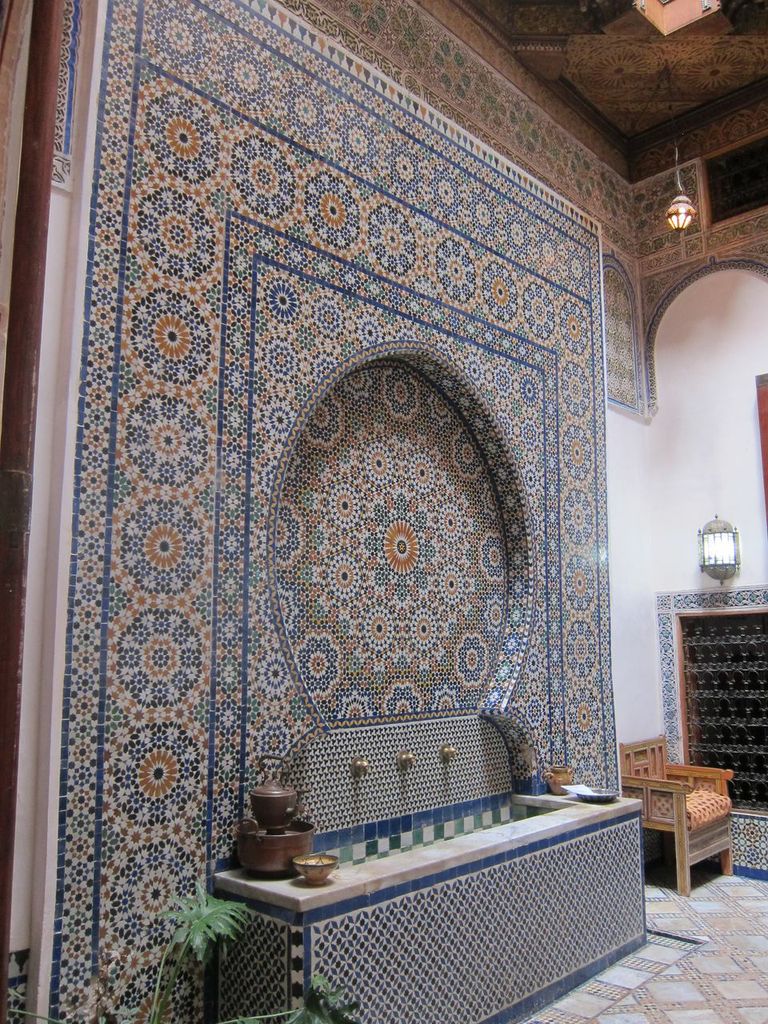 starts out something like this:
starts out something like this:
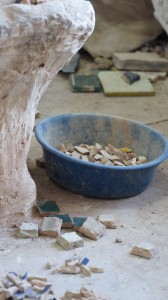
Or, to be more accurate, it starts as a bit of mud, which is shaped into a tile and glazed; those glazed tiles then have patterns sketched upon them and a maalem or master craftsman cuts the tiles precisely into tiny khatams, safts, and related shapes.
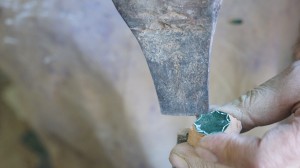
The last day of the Art of Islamic Pattern study tour, we visit a zellij workshop. The maalem or zellij master sits cross-legged on the floor all day, chipping the tiles into shape.
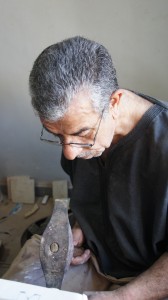
He set up a chair for us neophytes, though, insisting that it was too difficult for us even to attempt to chip a tile from a cross-legged position.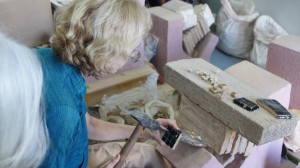
The chisel is heavier than you might think, and some coaching is in order: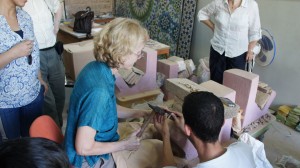
It turns out that the crucial factor is the angle between the chisel, the tile, and the thin metal surface on which the tile rests.
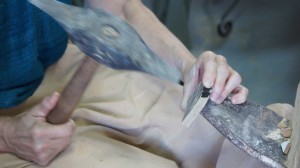
Adam, a sculptor, says that this is a little like splitting stone: get the angle right, and a single blow on a huge block of stone will split it down to the floor.
Pages from a long-ago magazine article are posted on the walls of the workshop, showing various steps of the process:

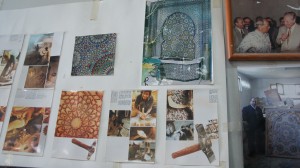
Once everyone who’s interested has had a chance to try cutting the zellij, we go downstairs to the room where the zellij are actually assembled.
But clearly, some of the designs are created freehand:

Notice that the patterns are constructed face down, with the colors obscured. Imagine getting a color wrong in a split-second of distraction and discovering the mistake only at a much later moment of truth.
James arrives with Zoe and Jeremy just as we are about to make our own little tiles, so I let the children take over my piece:
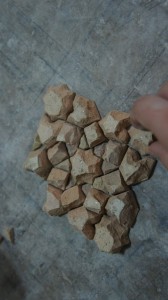
Once the pieces are arranged in the appropriate order, a temporary wooden frame is placed around them to hold them close together. Then some grouting powder is sprinkled over them…
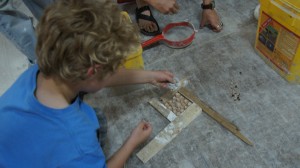
and water is flicked onto that grouting powder with a paintbrush. What fun!
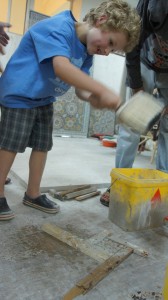
Then comes the plaster, rapidly applied by one of the apprentices of the workshop:
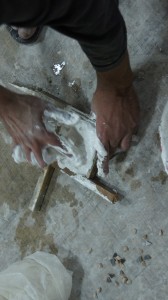
While the plaster is drying, Jeremy tries out other patterns as the maalem (master) rapidly creates a few additional shapes for other people’s patterns.
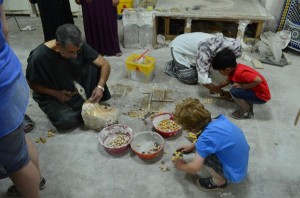
Finally, voila: the finished tile.
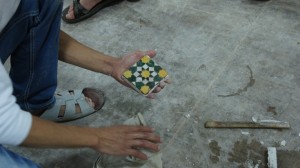
Now we just have to extend that pattern a hundred-fold or so to arrive at a small fountain design…
